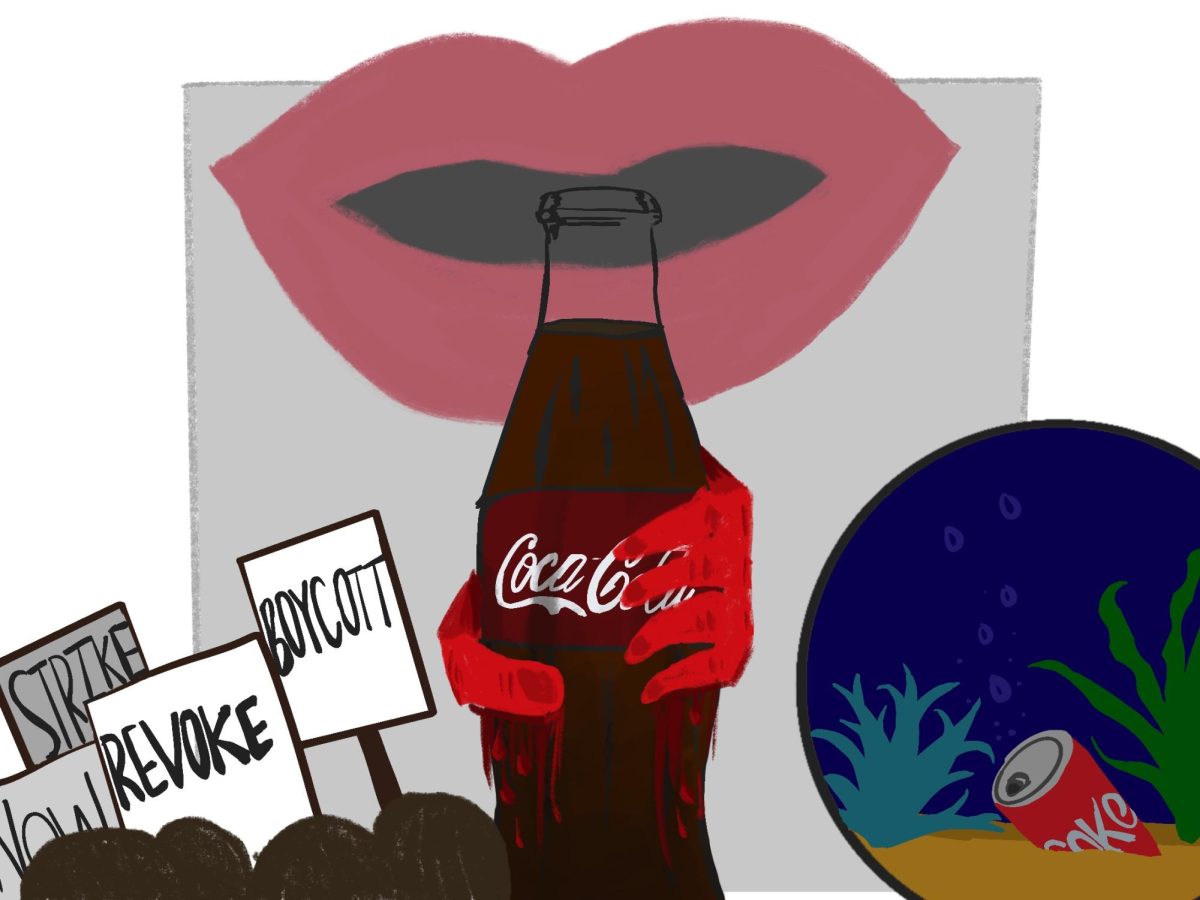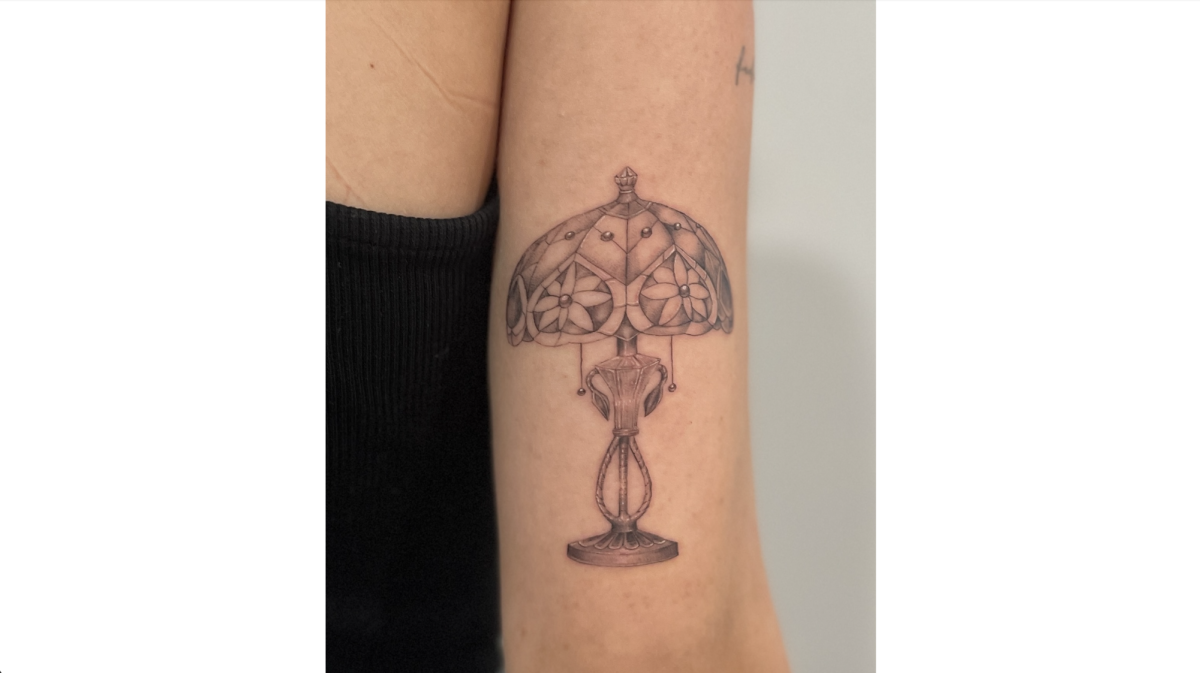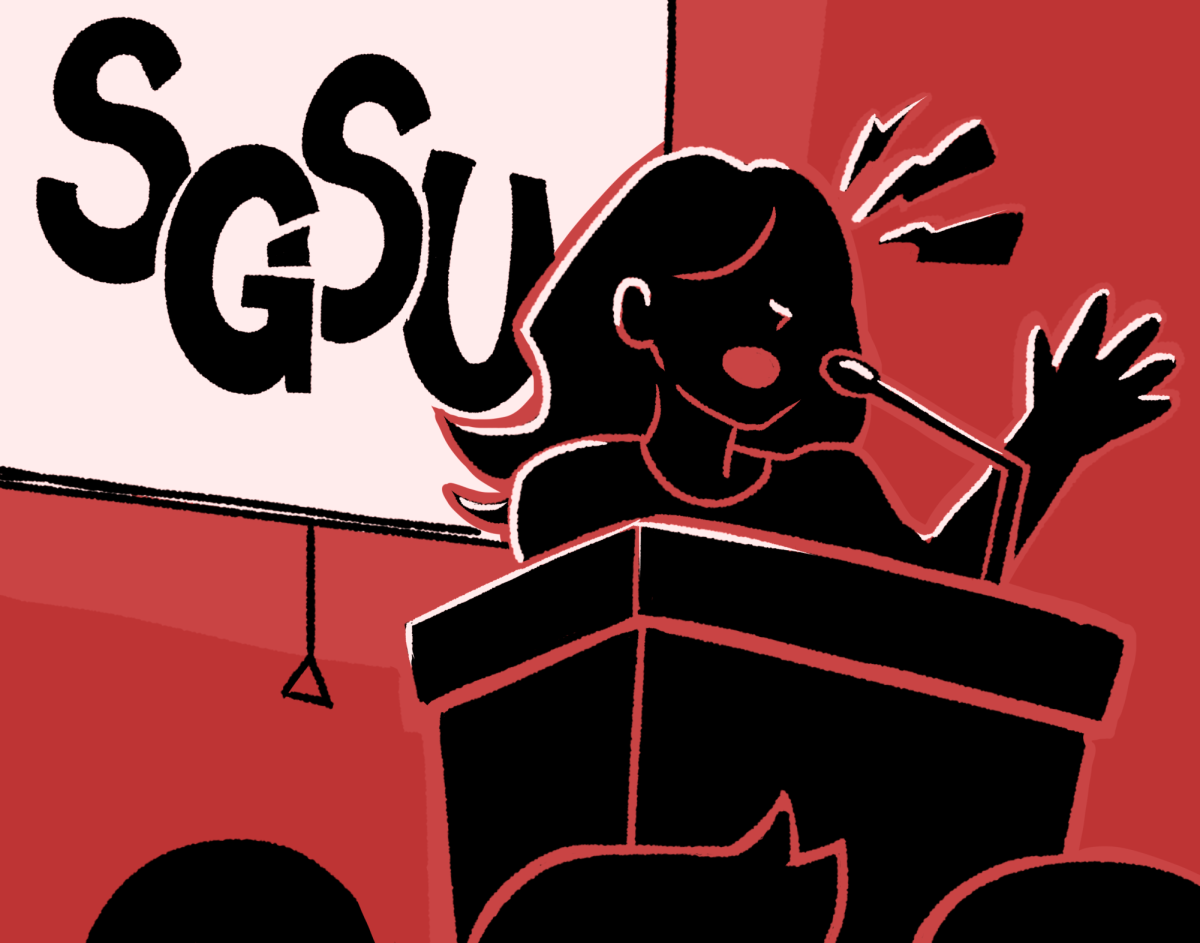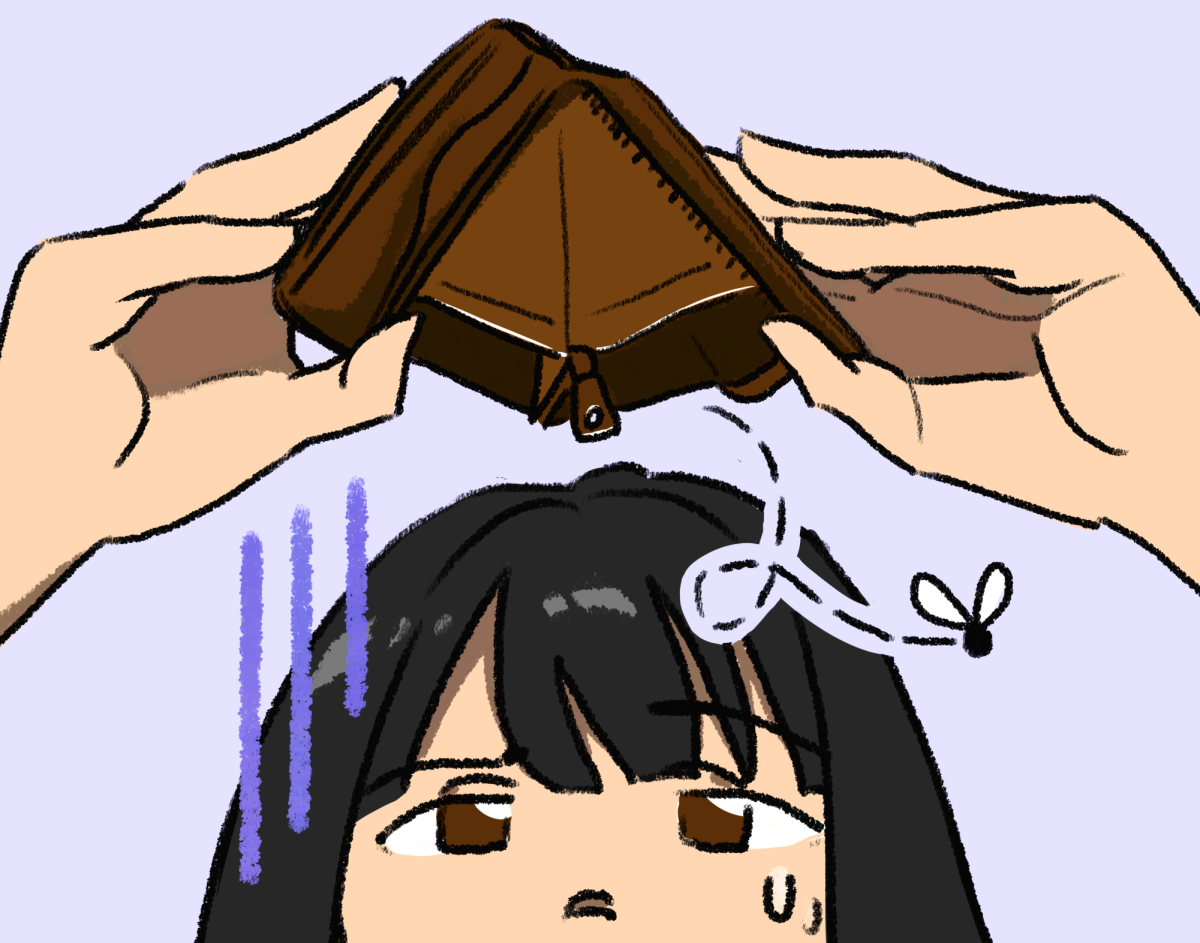Over the past year, members of the seattle university community have made a difference with their social justice advocacy. but according to some students, the university still isn’t serving them as well as it could. nationally, graduation rates are low and suicide rates are high for native american students, even as our schools sit on indigenous land. Can—and should—Seattle U atone?
Megan Castillo is a member of Tlingt tribe. It’s the most widely represented tribal group in the Seattle area, but she still feels underrepresented at Seattle U.
“I find it very complicated being multiethnic. I’m also Filipino, as well as a couple different white ethnicities,” said Castillo, a senior digital design major with an art history minor. “Figuring out that balance has been a challenge for me.”
She said that balance is especially difficult to navigate when it comes to her Tlingt identity. It can be hard, she said, to express parts of her identity that are not readily acceptable in a modern, urban city like Seattle.
“How do I feel connected to my heritage and my culture when so much of that is associated with nature?” she said. “Figuring out how one does that in an urban environment has been a journey.”
Castillo cites the work of Native American artists like Nickolas Galanin and Windy Redstar as avenues through which she was able to more fully realize the intersections between her Native identity and her contemporary environment.
“Through the work of other artists, I’ve been able to see how all of these [elements of identity] can collide.”
Senior Alexandra Peck, another Seattle U student of Native descent, echoed Castillo on several points, and introduced several other identity-related themes Castillo had not noted.
“Knowing how to exist in two worlds is a huge part of identifying as a native youth,” Peck said. “Balancing two, at times opposing, identities can be very difficult.”
Peck also spoke to the personal conflict she feels as a Native student attending a Jesuit university.
“There are social justice issues within [Native American] communities in Washington State—issues like education and poverty—that are marginalized by the mainstream in favor of more popular social justice issues,” Peck said.
By highlighting some of the systemic social justice issues that modern Native American communities face, Peck gives voice to a growing national debate surrounding the role of educational institutions in recognizing and remedying historical injustices committed against Native American communities.
With a list of demands for the university, Reignite the Mission, a student group on campus, has raised concern about Seattle U’s lack of proactive movement towards mending certain issues of social injustice. A group concerned with a number of what they perceive to be injustices on campus, Reignite the Mission has also raised awareness about what they believe Seattle U owes the indigenous community.
The demand, which can be found in a Google Doc on the group’s Facebook page, reads:
“In recognition of the fact that Seattle University is built upon occupied indigenous territory, students of ancestry indigenous to the Seattle area be given full tuition scholarships, as well as full room and board should they choose to live on campus.”
National voices share concerns inherent in Reignite the Mission’s demand. The 2014 Native Youth Report, published by the White House, details the problems confronting indigenous youth and issues a call to action to all Americans to remove the barriers that stand between native youth and their opportunity for success.
According to the report, more than one-third of native youth live in poverty, the four-year high school graduation rate for native youth is 67 percent (the lowest of any racial/ethnic demographic group across all schools) and suicide rates are nearly 2.5 times the national rate for young people age 15 to 24. To help alleviate these problems, the report calls for “investments and reforms targeting Native youth in education and other high impact areas.”
While most people seem to appreciate the general sentiment offered by Reignite the Mission’s demand, there was some reservation to accept it outright.
“It would be a good step to have a scholarship dedicated specifically to Native American population, first nation students, Alaska native students, et cetera,” said Dr. Christina Roberts, an associate professor of English and women & gender studies at Seattle U. “But at the same time we should recognize that there is still work that needs to happen within the campus community.”
She suggested that an institution that typically caters to the needs of a white student population, as Seattle U does, may be unaccustomed to serving the specific needs of Native students, and might unintentionally marginalize them.
Others are concerned that a typical understanding of what it means to be Native is often skewed towards the historical and the outdated, which could pose problems for universities seeking to increase Native American student enrollment.
“I don’t think Native students or communities are properly represented,” Peck said. “There’s a focus on the historical, but it’s rare to talk about what Native perspectives could offer presently, or what [Westerners] could learn if there was more two-way communication. Without that, misconception and ignorance [are] given an opportunity to spread.”
Peck’s fear is obviously not unwarranted, given the blighted history between the Church and Indigenous communities, and particularly with regard to the notorious legal notion known as the “Doctrine of Discovery.”
Developed out of Judeo-Christian expansion and colonial rule in the 15th century, this notion suggested that any foreign people or lands who were “discovered” by a Christian monarch were subsequently considered assets of that monarch and her kingdom. At the time of Columbus’ first encounter with the Americas, the Catholic Church was operating under this belief. It was used to justify the subjugation of foreign nations, and was extended to the nations Columbus and most every European explorer, conquistador and merchant after him encountered in the New World. In the U.S., this same idea was applied in the 19th century by the Supreme Court to invalidate and ignore the land claims of indigenous communities on the grounds that land ownership did not exist prior to European “discovery” of the Americas.
Notable contact and association between Jesuits and indigenous communities existed as early as the 16th century when Jose de Acosta, a Jesuit missionary and theologian, traveled to the Americas and wrote extensively of his experiences with people he encountered there.
“[De Acosta] had contact with some South American nations,” said Ted Fortier, an associate professor of anthropology, sociology and social work at Seattle U. His most marked contact was with Inca and Aztec populations.
De Acosta’s most noted work on his experiences with indigenous communities, “Historia Natural y Moral,” (1590) approaches the people and theology of the Americas from a more holistic angle than that of previous missionaries. In his book, “De Procuranda Indorum Salute,” (1588), de Acosta attempts to examine and critique missionary work in the Americas, offering a critical appraisal of the imperialistic missionary work being conducted by his fellow Spanish Christians. He worked to show that the aggressive behavior was detrimental to the Church’s ultimate goal, which remained the spread of Christianity.
Flash forward three hundred years to Washington State, where Father Joseph Cataldo founded Gonzaga University in 1887. According to Fortier, the university was “originally intended as a school for indigenous youth.” Shortly following the school’s construction, however, settlers from Spokane Falls demanded that the newly developed Mission School be transformed into an all-white college.
All of the abovementioned history and much more contribute to the contemporary identity of both the Church and the communities it touched. The consequences of that contact are still being felt today.
But the central issue is less the history between the Church and the indigenous community than it is how the university deals with that history. Sources highlighted the idea that increased enrollment should not be the first step Seattle U takes to repair its relationship. Instead, they proposed Seattle U could alter itself to better serve those students already in attendance; through more clubs, Native American cultural events, and the like.
This is not to suggest that Reignite the Mission’s ambition is overwhelmingly negative. Peck seems to suggest that alternative routes could be taken to promote connection between, and support for, Native students before changes aimed at increasing Native American student enrollment are made.
Fortier suggested introducing more Native American culture to the Seattle U campus community.
“I have brought Native elders into classes to give lectures and speak with students before,” said Fortier. “Every time, the guests have been huge hits with students. They really do seem to enjoy that style of learning, and such a strategy could be more widely employed around campus.”
Fortier argues that increased Native American student enrollment could not happen before their experience is made less marginal.
“There are so many people around campus who are wanting to do positive work with our relationships and within our communities,” Roberts said. “We need to make sure that there are some intentional, collaborative energies that are put forth in order to unite the different [communities] around campus.”
At Seattle U, where the student body is predominantly white, Castillo and other Native American students have sometimes felt an inability to explore those parts of their identities that are not in the mainstream.
“I’m always a little bit envious of clubs like the United Filipino Club, the Vietnamese Student Society and Black Student Union because they have enough people to organize,” Castillo said. “A club has been something that I’ve missed in my experience at Seattle U.”
While organizations like the First Nations Club and the Indigenous Consortium exist at Seattle U to bring students of Native American descent together, Castillo’s sentiment seems to suggest that more can be done to support and improve the experience of indigenous students at the school.
“I have one Native American friend at Seattle U, and we’re little bit better than acquaintances,” Castillo said. “So, I wish that connection could have been mproved.”
Will may be reached at [email protected]










